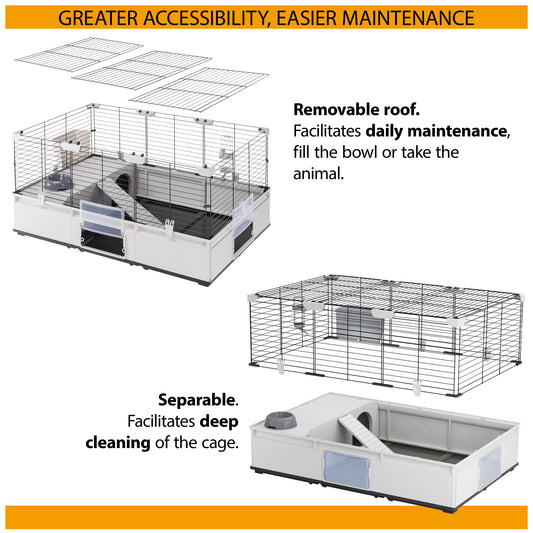If your cat is scratching excessively, coughing or wheezing, or has an upset stomach, it could be a sign that they are suffering with an allergy. Cats, like humans, can develop allergies if their immune systems have a hypersensitive reaction to a foreign substance. There are three main types of allergies that affect cats – fleas, food and environmental allergens.
Fleas
A flea bite allergy is probably the most common allergy found in cats. The majority of cats will only experience slight skin irritation if they are bitten by a flea but some can have a severe reaction caused by an allergic response to the chemicals in flea saliva.
For cats that are allergic to flea saliva, just one bite is enough to cause intense itching. This leads to them chewing and scratching the affected area until the skin is raw. There is a risk of a secondary bacterial skin infection in cases where a cat has damaged their skin through intense scratching so they may need a course of antibiotics.
In addition to a strict regime of preventative flea control, an owner can help an allergic cat by frequently washing bedding and soft furnishings at a high temperature to help keep the home a flea-free zone.
Food
Food allergies can develop in cats following a reaction by the immune system to something an animal has eaten. This is most commonly caused by the protein content in a cat’s food, such as beef, pork, chicken or turkey. In some cases, an allergic reaction is caused by a vegetable protein (such as wheat) or from additives and preservatives in processed pet food.
Signs that a cat could be suffering from a food allergy include itchy skin, stomach upsets and respiratory issues.
To get to the bottom of what food a cat is allergic to, a vet is likely to recommend a change of diet to one with minimal ingredients. A new diet would need to exclude everything that a cat has eaten before. After a while the symptoms should stop and other foods can be gradually reintroduced one at a time to see what triggers a reaction.
Environment
Environmental allergens such as pollens, grasses and house dust mites can all give a cat the equivalent of hay fever in humans. Symptoms of an environmental (atopic) allergy are usually intense itching but can involve asthma-like issues. An affected cat may also have discharge from their nose or eyes. You might notice that your cat displays symptoms of allergy only at certain times of the year, which can indicate that it is affected by something seasonal such as pollen.
Vets can test for common atopic allergies from a blood sample or they may refer a pet to a dermatologist for a more detailed intradermal test, in which a cat is injected with different antigens while under sedation.
Once the cause of an atopic allergy has been established, a vet will be able to recommend the best treatment for a cat, which could involve medication such as steroids, antihistamines or a topical (skin) product.
You can help to limit the impact of environmental allergens by frequently washing your cat’s bedding at a high temperature and brushing them regularly to remove debris from their coat.
When to see your vet
If your pet is displaying any of the signs of an allergic reaction such as itchy red skin, fur loss, over-grooming, wheezing or excessive sneezing, you should seek veterinary attention to try to determine the cause of the reaction.
If you found this article interesting, why not read:









